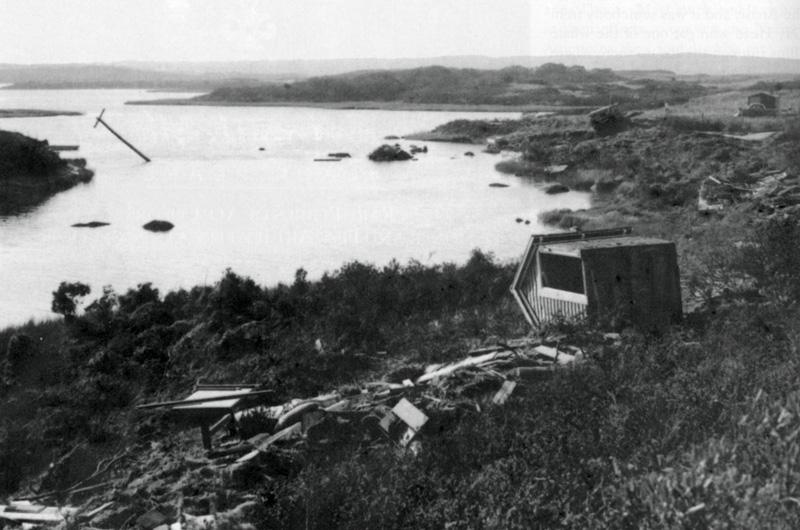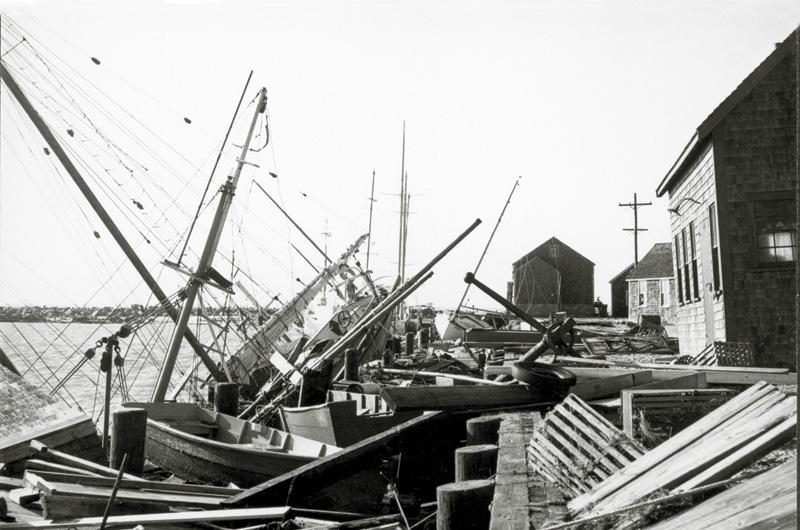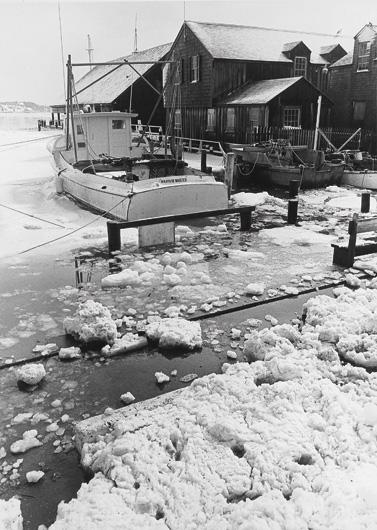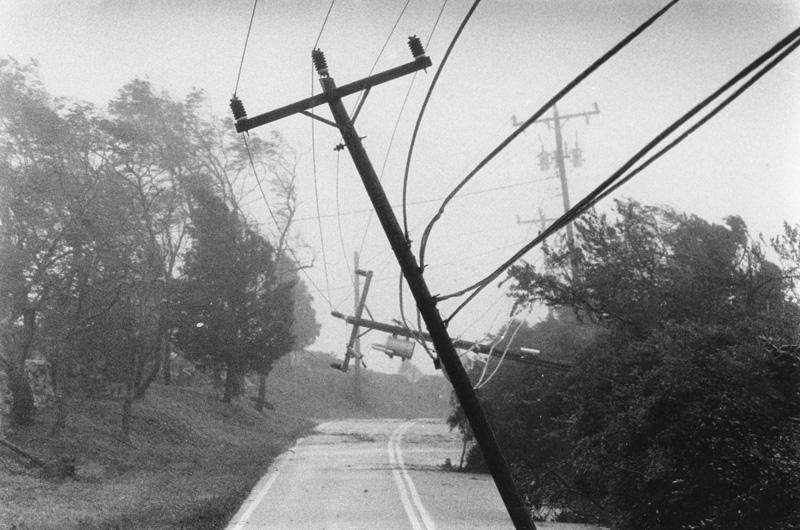Armor. Battle. Punishment. Malicious attacks. These terms come up over and over again in the Martha’s Vineyard Magazine archives. They describe an open-ended war being fought on Vineyard soil, and this time the enemy is not Nantucket – there is far more at stake than a bronze cup. What we are fighting for is our home, and the enemy is Mother Nature – a worthy opponent.
The Island undergoes natural seasonal shifts each year; these changes are exacerbated by hurricanes, blizzards, nor’easters, and ongoing erosion.
How do we fight back? It depends on what’s important.
If barrier beaches are saved, shellfishing might suffer. To protect family homes or real-estate investments from falling into the sea, do we sacrifice harbors and sounds? Not to mention everyone’s best friend, the piping plover. As the landscape changes, wildlife – from birds to the insects that feed them – is put at risk.
The changes that have occurred over the years in areas such as Farm Pond in Oak Bluffs and Eel Pond in Edgartown are symptoms of greater coastal changes the Island over. And how long will these changes take? Depends on whom you talk to. The geologists see hundreds of years in the blink of an eye, while to a layman, nothing major will occur in our lifetimes or our children’s.
The subject has been tackled from every angle over the years – by conservationists, meteorologists, geologists, shellfish wardens. Though there are differing opinions on how and why it will happen and how long it will take, the Island is changing before our eyes.
At this rate, we’ll all have waterfront property.
Storms

The Great Hurricane of 1938: The fearsome hurricane utterly destroyed Hariph’s Creek Bridge on the Gay Head road. Quitsa and Gay Head – the latter now renamed Aquinnah – became a separate island. Three of the summer houses on Stonewall Beach were washed into Quitsa Pond, and one woman perished in the flood.
– Edited from an article in July 1999.

Hurricane Carol, August 31, 1954: Small boats had been tossed up onto the parking lot, which now looked like an extension of the beach – sand everywhere. In more than one case, a boat had gone down bow-first and left only the stern showing the name of what had once been a prized possession. One mast still had the “For Sale” sign on it that had been put there only days before by the owner, who now appeared to have no boat to sell.
– Edited from an article by Shirley Mayhew in August 2007.

The Blizzard of ’78: How people perceived the storm depended on what they themselves experienced, says Michael Tougias, author of The Blizzard of ’78 (On Cape Publications, 2003). “If you were stuck on the coast or in your car, it was awful and terrifying,” he says. “If you were home safe, it was great – you remember neighborhood parties and skiing in the streets. As long as you didn’t have to get off-Island, it was no big deal.”
– Edited from an article by Christine Schultz in Not Summer 2003–2004.
Hurricane Bob, August 19, 1991: As in any good assault, Bob swung in and out with alacrity. Morning on August 19 was thick but quiet; by dusk the storm was over. A strange meteorology occupied the intervening hours. Winds gusted – as high as 112 miles per hour by official counts – but little more than a tenth of an inch of rain fell.
Much of what Bob tells us we really don’t want to hear – that stabilization is a non sequitur in nature, that nature itself is plainly unsentimental, and that our piety about the injury that we inevitably cause to ecological systems when we interrupt them is a conceit.
– Edited from an article by James Lengyel in May–June 1992.

Hurricane Bob: I took the sails off Netcher and let out extra scope on the mooring line. We made sure we had batteries, candles, lamp oil, and canned goods. We taped the windows and filled the tub with fresh water, although that proved to be worthless when, at the height of the storm, our dog jumped into it. We tied down everything that could move and parked the car in the middle of the lawn where it would be less likely to get hit by a tree. Then we hunkered down and hoped for the best.”
– Edited from an article by Geoff Currier in August 2005.
Geology
The Island backbone of Martha’s Vineyard was formed by glaciers, between fifteen and twenty thousand years ago, but the coastlines have been forming and reforming ever since the glaciers’ retreat. Waves and storm winds, hurricanes and northeasters have made our ephemeral shores out of fine and coarse sands, constantly in motion. Over centuries, barrier beaches have retreated and sealed the coastal ponds. Cliffs have shed acres of sand and clay, which have been shuttled back and forth to the accumulating barriers, out to submerged offshore bars in winter and back to gently cloak summer beaches or to feed and build tidal marshes, the ocean steadily rising all the while.”
– Edited from an article by Mark Adams in July 1997.
Sudden changes alert us to the steady geologic changes, evolving all along at the less appreciable rates of thousands and tens of thousands of years. Geology leaps out of the textbook and into your pathway. “You can look at lichen and know it is a pioneer species with an acidic reaction that will eventually break rocks down to sand,” says Suzan Bellincampi of the Trustees of Reservations. “But it’s not going to happen in my lifetime, or my kids’ lifetime, or their kids’ lifetime. You have to learn to look at the landscape for it to tell you what’s happening over geologic time. That’s what’s cool.”
– Edited from an article by Christine Schultz in Not Summer 2005–2006.
Erosion
After years of battling with nature along the coastline battlefield, we have learned the expensively sobering lesson that today’s technology will never conquer the dynamic forces that shape our environment. It is almost as though we were meant to learn this and many other lessons about our place in the scheme of things.
– Edited from an article by William E. Marks in Summer 1988.
The caprices of gales and swells have made a mockery of state highway engineers as they attempt to reclaim Oak Bluffs’ Beach Road from the past winter’s storms. County beach managers are struggling to find enough sand to allow fishermen and plovers to share the narrow spit of Norton Point Beach. Proposals to armor the shore have begun to target the Vineyard’s remotest beaches. And a succession of busy storm seasons has sent some private landowners into a panicked search for heavy armaments against the seemingly malicious attacks of the ocean.
The Vineyard’s coastal humans have battled against rising oceans and receding shorelines for generations.
The ocean gives and the ocean takes away. Live with it. This could be the basis of an effective shore-erosion policy for Massachusetts offshore islands.
In spite of rising seas, possible shifts in climate and weather, and the wholesale redrafting of our coastal maps, people will never abandon the coast. We love it here. But the decaying coastal structures of the nineteenth and twentieth centuries can only be propped up and sheltered for so long. Our most ingenious feats of engineering cannot keep continents from subsiding or the sea from rising. And we certainly can’t stop the waves.
– Edited from an article by Mark Adams in July 1997.
Bob Woodruff, biologist and executive director of the Great Pond Foundation, says, “The Island is shrinking every day. The beaches are eroding at a fairly rapid clip. Up at Lucy
Vincent, Wequobsque Cliff area, the beach is receding at a rate of around six to seven feet a year. In any given storm, it might lose two or three feet, but the long-range average is
about six or seven feet. The northwest coast is being attacked by northwest winds: strong, cold-front, high-pressure winds. The northwest shore is fairly armored with boulders, clay
cliffs, and some sandy areas as well. And the sandy areas, like Makonikey, are likely to erode more rapidly than Cedar Tree Neck or Menemsha Hills.
The northeast side, from East Chop to Edgartown, is attacked by northeast winds in storms, and those can be more punishing than the northwest wind. And State Beach and Sengekontacket are severely under attack by those northeast winds. The only thing that keeps State Beach from eroding more seriously are the rock groins that stick out to catch sand, but they are inefficient in a sense because of the armoring of the whole East Chop bluff, with rock beneath the bluffs there to prevent East Chop from disappearing.”
– Edited from an article by Kate Feiffer in August 2007.
The armory of riprap and jetties at Oak Bluffs is needed to keep the harbor open for the ferries and boats. But it’s because of that man-made interference that Beach Road, farther down the shoreline, is washed over so often. Sand is trucked in to build up Joseph A. Sylvia State Beach temporarily after powerful storms, but it’s a short-term solution to long-term geology. “We try to balance as best we can,” says James O’Connell of the Woods Hole Sea Grant and Cape Cod Cooperative Extension. But after twenty years as a coastal specialist, he knows the only course of action is reaction, and over the long term, that won’t be good enough.
– Edited from an article by Christine Schultz in Not Summer 2005–2006.




